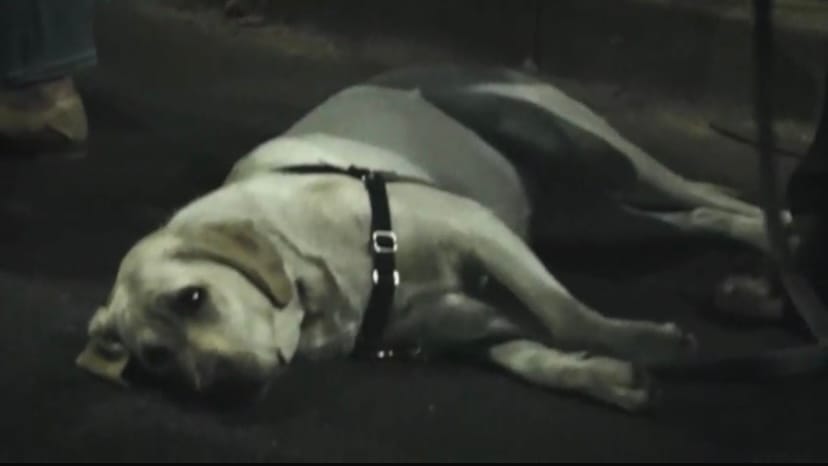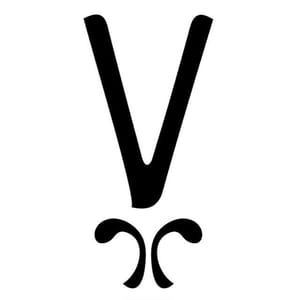The ordinary, the feeble, and '48
Filmmaker Tash Lever documents the Israeli anti-war movement and everything in between.

Photographer and solidarity activist Tash “Trash” Lever and I never crossed paths in north-west London but found ourselves living together in a Jerusalem apartment in September 2022. We were both participating in Achvat Amim, an immersive political education programme aimed at bringing diaspora Jews into anti-occupation work and activism on the ground. It was only after stopping off at a random gas station during a car ride back from a pretty hard-hitting trip to the West Bank that our friendship really blossomed; it was stupidly late and the random gas station turned out to be in fact an Elvis-themed diner; the ceilings, the floors, the toilets, everything was covered in Elvis, and we were like, in what corner of hell have we found ourselves, and we sat down and ordered a bowl of soup but were served a plate of Heinz beans instead. Tash later memorialised the evening in a video collage set to heavy metal music that perfectly captured the fever dream quality of what we were getting to know as our daily life here, with all its daily contradictions. (Two and a half years later, we’re both still here, both still immersed in on-the-ground activism.)
As silly and actually kind of disgusting as it was, the Elvis video was a pure work of art, and an early form of Tash’s attempt to document the absurd continuation of life in ‘48 against a backdrop of increasingly unfathomable violence. Over the past two years, and especially since last October, she has been capturing anti-war demonstrations and actions on her camcorder, before returning home to edit the footage into something that is by turns horror film, by turns classic sitcom, by turns Shakespearean tragedy.
Conveniently for me, Tash has been subletting my housemate’s room for the past couple weeks, giving me the opportunity to ask her about her photography, her activism, and her “biological need” to find the humour in everything (indeed, “link in bile”, advises her Instagram profile) — along with the anxieties and sorrows that attend that need. I promised I would be nice, seeing as she was recently “traumatised by Louis Theroux” whom she bumped into while helping out with the olive harvest in the West Bank, and who kept asking her if her parents were Zionists.
But I do have to ask her how she got to Israel-Palestine (“oh God”). Following an MA in Middle Eastern Studies at SOAS, and working as a teacher in a primary school in Hackney, Tash was weighing up “spending some time in a nunnery in Nepal”, and moving here to do Achvat. She chose the latter, never left, and joined Achvat’s staff last year as their educational director.
She took her Nikon with her to Jerusalem, the one she got when she was sixteen, after reading A Period of Juvenile Prosperity by Mike Brodie – a photographer who went freight train hopping around America in the 90s. She looked up what camera he had used, and it turned out to be a Nikon F3, and she went and got herself one. For a few years, it went with her everywhere: she was an active member of a communal dark room at university and made headway on various personal projects looking at queer spaces and outdoor swimming.
But Jerusalem, Tash explains, required something else. The F3 with its manual focus and film was unable to “keep up” with what she was wanting to express of the highly militarised and segregated city. For a while she got around with a friend’s digital camera which had a “really good lens” but which she “absolutely hated”. Frustrated and depressed about the worsening political situation, and quick to fall into existential questions about her place and positionality and whether she ought to be standing there with a camera at all, it was an article by the documentarian John Wilson – “just use whatever you have”, she summarises for me – that let her feel the energy to do and make things again. On a trip back to London in September 2023, she went through her parents’ loft and found an old videotape camcorder. It was perfect.
Before long she was taking it to the Rothschild Boulevard and the Kirya and the American embassy and being forced to pick her shots before the tape ran out. She would be there to film the protest and what she would opt to film would be somebody’s golden retriever lying in the middle of the Ayalon highway, piles of police horseshit in the middle of the Ayalon highway, smiles and waves, and looks of desperation, and various people concentrating on their various sandwiches.
Of course, the chants and the screaming and the angry posters form a big part too, along with the police’s casual brutality, mostly directed against the small but strong-willed radical bloc, who hold up pictures of children killed in Gaza, and call on megaphones for an end to the genocide. These activists are probably the main characters of Tash’s films, but they certainly aren’t the only ones. Tash is clear on the fact that there is a minority here who care about Gaza, and that there is a majority who don't, and that she would be afraid of misrepresenting the reality of the society. What she is aiming to do is document that reality, and nothing less.
In perhaps her most haunting film, she records an action that took place over Purim last year. Activists took over the Rothschild Boulevard and “dressed it up” as Gaza, setting up tents and laying out fake body bags which people are forced to step over. Over the course of Tash’s one and a half minute film, the tents are slowly, easily destroyed by passersby, the body bags kicked around and thrown about, so that everything is left in ruins by the end of the day.
But no one, not even the leftist activists, really escapes exposure in her films. One from last January opens with a shot of hands plunging themselves into a bucket of red paint, and closes with the same hands washing themselves clean in a public fountain. If reality is what she wants to reveal, she is bent on showing us the performance that a protest is, on “bringing down a notch” any moral high ground that any of us who turn up in these spaces before duly returning home, may be disposed to harbouring.
What she is really interested in pointing out is the feebleness, above all the “awkwardness” that lies behind the grand event. She is “obsessed” with “that one poor man” who has to schlep a ladder around for Alon-Lee Green, the director of Israeli-Palestinian grassroots movement Standing Together, to take his photos from. I have a soft spot for the man in hi-vis who fits in a quick chug of water before returning to steward the crowd in the fashion of an interpretive dance. And I love the woman who for some long painful seconds, struggles to find the sleeve of her coat. Everyone is kind of made to look kind of stupid, even the bad guys. We see someone confronting a group of leftists with an umbrella in hand, someone else poking at them with a witchlike cane, and a heavily armed policeman dramatically throwing a drum into the back of his van – “arresting it”, as Tash puts it in her caption on Instagram. But then, there’s also that leftist who gets all knotted up in his own drum, and that other leftist who blows a kiss to some guy flipping her off, and all in all everyone is never far from appearing as ridiculous, as awkward, as feeble as the next person.
I am pretty sure there is a tenderness that comes with all of this exposure, and if not tenderness, then maybe just sadness. She says she does “feel bad” making people look bad, catching them out in a way, critiquing them more or less. And yet she does wonder to herself at the protests, why aren’t they doing more, “Why aren’t they being crazier?” But they couldn’t physically go around with their hands painted red 24/7, she supposes. Or maybe they could. She feels that this question of how ordinary people ought to exist at at time of genocide is the same question being asked in the Zone of Interest.
A few times while Tash is talking to me, she refers to this thing of “feeling bad”. There is indeed something to be said of an inherent badness to the position of the onlooker or artist, looking on and making art as hordes of people are killed. That anxiety about badness shows up in the very texture of the film – while transferring the videotapes to her computer, she loses even more quality than already exists. Our mutual friend once described the resultant home-movie blurriness as making you “feel safe, like it’s all in the past”.
So something is wrong. She worries that the humour and somewhat quaintness of her work is a reaction against sitting with all that is too awful to really sit with, and all that only worsens by the day, however many miles from where we’re sitting. No Palestinians, certainly no Gazans, make an appearance in her work, and they remain for her what she calls an “invisible third”.
I circle back to the face of her own guilt, whether she feels it ever comes through the camera, and she says, well, it's probably there in the fact she hasn’t been filming these past few months. She stopped feeling like there was much of a point around the year mark, when she stopped letting herself get “caught up in” the waves of hope for a possible ceasefire. The final protest film posted to her Instagram is from the anniversary of 7 October itself. The man with the megaphone announces: “we believe in it and in what you are willing to say: for this we march in the streets”, and the camera pans to a guy slumped over a railing, his head in his hands. He could almost be drunk, and the timing could almost be funny, if it weren’t just so fucking sad.▼
Kate Greenberg is an editor at Vashti.
Author

Kate Greenberg is a writer, activist, and editor at Vashti.
Sign up for The Pickle and New, From Vashti.
Stay up to date with Vashti.



